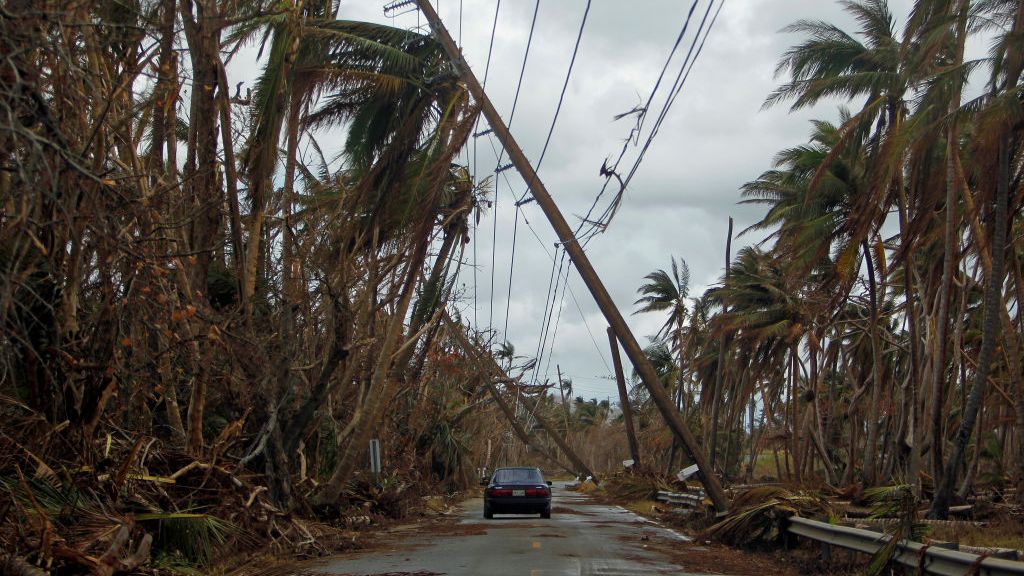Wednesday
The Trump administration’s disastrous response to Hurricane Maria has all but vanished from the news, causing us to wonder whether Donald Trump really can shape reality. In the early days, after all, he boasted about his A+ response and compared his performance favorably to George W. Bush’s handling of Hurricane Katrina:
We’ve saved a lot of lives. If you look at the—every death is a horror. But if you look at a real catastrophe like Katrina, and you look at the tremendous—hundred and hundred and hundreds of people that died. And you look at what happened here with really a storm that was totally overpowering. Nobody’s ever seen anything like this. And what is your death count at this point, 17? . . . Sixteen versus literally thousands of people.
This past week a Harvard study reported that the death toll was actually closer to 5000, with deaths continuing to come in because of damage to health care, infrastructure, and other basic services. For the Trump administration, however, it’s as though the disaster never happened.
In other words, the situation resembles the banana massacre in Gabriel Garcia Marquez’s One Hundred Years of Solitude.
In that work, the government massacres striking workers at an American-run plantation and then claims that no one died. The one survivor, Jose Areliano Secundo, returns to discover that the massacre has vanished into thin air:
The official version, repeated a thousand times and mangled out all over the country by every means of communication the government found at hand, was finally accepted: there were no dead, the satisfied workers had gone back to their families, and the banana company was suspending all activity until the rains stopped. Martial law continued with an eye to the necessity of taking emergency measures for the public disaster of the endless downpour, but the troops were confined to quarters. During the day the soldiers walked through the torrents in the streets with their pant legs rolled up, playing with boats with the children. At night, after taps, they knocked doors down with their rifle butts, hauled suspects out of their beds, and took them off on trips from which there was no return. The search for and extermination of the hoodlums, murders, arsonists, and rebels of Decree No 4 was still going on, but the military denied it even to the relatives of the victims who crowded the commandants’ offices in search of news. “You must have been dreaming,” the officers insisted. Nothing has happened in Macondo, nothing has ever happened, and nothing ever will happen. This is a happy town.” In that way they were finally able to wipe out the union leaders.
The erasure is so complete that, when the military find their way to Jose Arcadio’s house, in magical realist style they literally cannot see him, even though he is sitting there before them. He, meanwhile, becomes a hermit obsessed with proving that the massacre actually took place.
Think of him as those Harvard academics toiling away in obscurity while the denying world moves on. Jose Arcadio’s brother stumbles upon him doing research years later after everyone has forgotten about him:
Jose Arcadio Segundo, devoured by baldness, indifferent to the air that had been sharpened by the nauseating vapors, was still reading the rereading the unintelligible parchments. He was illuminated by a seraphic glow. He scarcely raised his eyes when he heard the door open…
“There were more than three thousand of them,” was all that Jose Arcadio Segundo said. “I’m sure now that they were everybody who had been at the station.”
When CBS’s Leslie Stahl once asked Donald Trump why he relentlessly attacks the press, he replied, “You know why I do it? I do it to discredit you all and demean you all so when you write negative stories about me, no one will believe you.” That doesn’t absolve the press from telling the world about one of Trump’s greatest failures. He, however, has found ways of creating his own preferred reality.
At the moment, unless you’re Puerto Rican, it’s as though the hurricane never happened.


